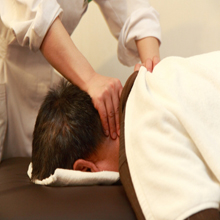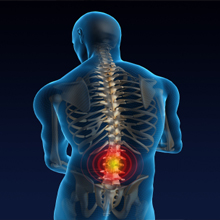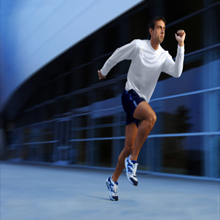Search By Keyword In Your City, State or Zip Code
Chiropractor in Texas City, Texas
Hughes Chiropractic and Wellness Center
000-000-0000

1501 N Amburn Rd #2 Texas City TX 77591
Business Description
As a chiropractor, we understand that although our patients may be diagnosed with the same condition, they respond very differently to treatments. For this reason, we tailor a specific plan of action to meet your needs, goals & unique medical and physical condition.
Finding a chiropractor who understands changing health care needs and the most current techniques and approaches to addressing health problems can be a daunting task. We hope that you will find this site helpful in learning more about our gentle chiropractic care as well as the ways that it can improve the quality of your life.

Mission Statement
To provide Texas City quality Chiropractor assistance as a Chiropractor, Radiculopathy, Spinal Decompression and Soft Tissue.
Hughes Chiropractic and Wellness Center meeting your Chiropractor needs since 1990.
Back pain can be caused by a variety of issues – poor posture, muscle strain, a herniated disk, and countless other reasons. At Hughes Chiropractic and Wellness Center, we can locate the cause of your back pain and then treat it accordingly. Our spinal decompression treatments are effective in treating all sorts of pains, like headaches, neck pain, and more.
If you have a more complex issue like sciatica or radiculopathy, we can help treat it. We also offer injury treatments for those who have a sports injury, car accident injury, or other issues. Our commitment to helping our clients live happy, pain-free lifestyles is what makes us one of the best chiropractors around since our start in 1990.
Do you have back pain? Come to Hughes Chiropractic and Wellness Center! Our office is located in Texas City, TX. To contact us, dial (409) 935-1400. For more information, visit our website at: hugheschiropracticandwellness.com.
Key Contacts
Dr. Tim Hughes D.c.
1) Adjustments & Manipulation
Adjustments, or manipulation as they're sometimes referred to, are the minor movement of vertebrae in the spine. The objective of this movement is to realign vertebrae that have moved out of place for a number of reasons ranging from normal daily activity to trauma such as a motor vehicle collision, or sports injury.
When these vertebrae are out of place, this can contribute to an overall systemic effect on the nervous system and therefore all systems of the body. With proper transmission of information between the brain and the body through an unimpaired nervous system, we give ourselves the best chance to enjoy optimum health and healing.
An adjustment is often a specifically applied force from the chiropractor utilizing the hands or an instrument to move a subluxated (malpositioned) vertebrae back into place, and restore proper movement to a vertebrae or a joint. This happens with a quick movement and is often without discomfort. You may hear a noise that sounds like you're cracking your knuckles referred to as joint cavitation. It is the release of gases such as oxygen and nitrogen from the joint.
Overall, adjustments are an excellent way to keep the body functioning at its highest level. When the body is in alignment, the body is able to respond and perform as it was designed.
X-Ray
X-rays are often taken on most patients as part of the initial visit and diagnostic phase of an initial evaluation to give the doctor an inside look at what is going on with the bone structure of the entire spine and surrounding skeletal structure. From this x-ray, the doctor can tell the condition of the boney elements of your spine, and determine if more advanced imaging is necessary such as an MRI.
2) Therapeutic Exercise
Directed towards the restoration of function and mobility. Restores muscle tone, decreases fibrotic scar tissue, and increases elasticity and muscle strength. It also increases range of motion; retrains damaged muscles and helps strengthen spinal stability
Theraputic_Exercise.jpgPARTIAL SIT UP
Partial sit ups are recommended for people with back pain. The same muscle groups are worked out without putting stress on the lower back. You will start just like a regular sit up with your back on the floor, both feet on the floor, and your knees bent. Raise your head, neck, and shoulders off of the floor and hold that position for 5 seconds. This exercise will strengthen your core and is simple to do. Repeat as many times as you can, with a goal of increasing your reps each day.
KNEE TO CHEST
You start this exercise the same way like the partial sit up. Begin the exercise by drawing one of your knees to your chest, using both hands (only one foot is now on air). Hold to the count of 10, then slowly release it to the rest position. Do 4-5 repetitions, and then repeat with your other leg, then both legs at the same time. This exercise stretches your glutes and back.
HIP ROLL
Start this exercise flat on your back with your arms extended out to the side. Bend your knees and lift your feet off of the ground. You will now rotate your hips to the side so that your legs become parallel with the floor. Rotate from side to side for 5-10 repetitions. This is another core exercise that strengthens your abdominal muscles.
LOW BACK EXTENSION
Start by laying flat on your stomach with your hands to your side. Lift your head and upper body off of the ground by using the muscles in your lower back. Hold this position for 4-5 seconds and then lower yourself back down. Repeat 10-15 times.
CAT-CAMEL
Position yourself on all fours with hands directly beneath your shoulders and knees directly beneath your hips with your back straight. Use your abdominal muscles to push your back towards the ceiling, arching it like a cat. You should notice your head will point down towards the floor. Next, drop your back so that your lower back extends. Your head should raise when doing this. Make sure to keep your elbows straight the entire time, the only movement should be in your spine. Repeat this 12-15 times.
BACK EXTENSION
This exercise is best performed with a stability ball. Lay with your stomach on the stability ball with your hands behind your head. Tighten your abdominal muscles and use your lower back muscles by contracting your glutes to lift your shoulders and chest off the ball.
SUPERMAN
Lie face down with your arms extended above your head. Tighten your abdominal muscles and lift your arms and legs off the ground. It should look like you are in a Superman like flying position. Hold this for about 30 seconds and then release. You may be tempted to hold your breath when clenching your abdominal muscles. DON'T! Control your breathing while holding this position.
DOUBLE LEG LIFTS
Using a stability ball, lay face down with your hands on the floor in front of the ball. Raise both legs off of the floor until your body is horizontal and hold the position for about 10 seconds. Lower your legs back down to the floor and repeat 5-10 times.
SPINAL ROTATION
While seated in a chair, reach one arm across your stomach and grasp the opposite side of the chair. Look over the shoulder while rotating the low- and mid-back. Hold for 15-30 seconds.
EXTERNAL SHOULDER ROTATION
Start by lying on your right side with your right arm folded under your head. Your upper left arm should be parallel to your torso, bent at the elbow so that your forearm is lying across your stomach with your hand on the floor. By rotating your left shoulder, raise your forearm so that it is perpendicular to the side of your body. Switch to your other side and repeat. This exercise can also be performed with a dumbbell.
INTERNAL SHOULDER ROTATION
Lay on your right side, like in the external shoulder rotation, but keep your right hand free this time. Keep your right arm next to your body and bend at the elbow. Rotate your shoulder to move your forearm. It will start flat on the floor, and then you will rotate it into your body so that your forearm is flat across your stomach. Repeat this motion 10-15 times and use a dumbbell if you prefer.
LATERAL DELTOID RAISE
Start with your arms to the side of your body, palms facing the thighs. Tighten the abdominals, bend the knees slightly, and position the feet about shoulder-width apart. Raise your arms straight out to your side until they are shoulder height. Hold that position briefly, and slowly return your arms to your sides.
FRONT DELTOID RAISE
Start with your arms in front of your body, palms facing the thighs. Tighten the abdominals, bend the knees slightly, and position the feet about shoulder-width apart. Raise your arms straight out in front of you until they are shoulder height. Hold that position briefly, and slowly lower your arms.
SINGLE-ARM LAT PULLDOWN
Begin with both hands overhead holding an elastic resistance band. Engage the abdominals, bend the knees slightly, and position the feet about shoulder-width apart.
Pull downward to the side with one arm, adducting at the shoulder until the upper arm is next to the torso. Pause, then return slowly to the starting position. Keeps your arms slightly in front of the face to protect the back and shoulders.
STABILITY BALL PUSH-UPS
Start with the ball under your stomach and your hands on the floor in front of you. Roll forward slowly until your shins are balancing on the stability ball. Now perform pushups as your normally would by bending at the elbow.
SIDE LUMBAR BRIDGE
Lie on one side with your legs straight. Support the upper body by keeping the elbow directly beneath the shoulder. Being careful not to let the top hip rotate forward, engage the abdominals and use the torso to lift the hips. Hold this position for 10 to 15 seconds, maintaining a neutral neck and spine position.
SINGLE-LEG REVERSE CURL
Lie on your back with one knee flexed and foot flat on the floor and the other leg straight out slightly raised off the ground. Extend arms flat along body and maintain neutral alignment in the cervical spine.
Lift the working knee and leg in an upward diagonal direction over the belly button. Pause, then slowly lower the leg to the starting position. Repeat with other leg.
CRUNCH W/ STABILITY BALL
Lay down with your back on the stability ball and your hands behind your head or folded across your chest. Maintain a backwards-pelvic tilt and raise shoulder blades off the ball, return to the starting position, and repeat.
NECK FLEXION
Stand facing the wall and hold the stability ball at forehead height. Use your neck muscles to push your forehead into the stability ball. Relax and repeat.
NECK EXTENSION
Stand facing away from the wall and hold the stability ball behind your head. Push back of head into the ball.
NECK LATERAL
Stand sideways to the wall. Hold the stability ball above your shoulder at the side of your head. Push side of heads laterally into the ball.
Neck Stretches
Bring your ear to your shoulder
Let your neck to sit in that position for 5 to 7 seconds
Force your ear toward your shoulder.
Feel the stretch of your neck muscle on the opposite side.
Same principle as the exercise before...
Bring head back as if you are looking toward the ceiling.
Feel the stretch in the muscles located on the front part of your neck.
If this exercise causes dizziness, fainting or loss of balance… STOP THE EXERCISE AND CONTACT YOUR PHYSICIAN.
Rotate your head toward your (R or L) shoulder and then
Nod your head down and you will feel a stretch on the opposite side of which you are looking. Just hold for a few seconds and repeat.
Neck exercises for strength
Put your hand on your forehead and force your forehead against your hand to provide resistance. You can do this in several sets of 6, 8, or 10 repetitions.
Place your hands on the back of your neck and force your head back while providing resistance with your hands.
Do these exercises in several sets of 6, 8, or 10 several times a day and you will be surprised at the amount of flexibility that returns in a couple of months.
3) Electrical Muscle Stimulation
Used to produce muscle contraction and decongestion, and also stretching of fibrotic tissue and hyperemia. Blocks pain, reduces swelling and inflammation. Promotes muscle tone and speeds the healing process. It stimulates muscles by supplying an artificial contraction or spasm in order to fatigue muscles which are in spasm.
Ice (Cryotherapy):
Used to help reduce swelling and inflammation. It constricts peripheral blood vessels and is effective in preventing post traumatic swelling. It numbs localized area to reduce pain. Reduces muscle spasms and pain, decreases metabolic rate, and it contracts elastic tissue and controls hemorrhage.
Interferential Therapy
Interferential:
Aids in the relief of pain and promotes soft tissue healing. Reduces symptoms, decreases localized swelling, releases the body’s natural pain killers (endorphins), increases blood circulation and reduces muscle atrophy. (One of the few therapies that is effective in all three stages of care.)
4) Decompressive Traction/ Spinal Decompression
Decompressive Traction Is an Alternative to Surgery
You don't have to live in debilitating pain. Whether you have lower back pain, a pinched nerve, sciatica, neck pain, or a variety of symptoms related to damaged or degenerative discs, as well as syndromes of the lumbar and cervical spine, Disc Decompression Therapy may be for you.
This gentle, non-surgical therapy can provide lower back pain relief, sciatica pain relief, and is a state-of-the-art therapy for neck pain relief, bulging or degenerative disc disease, and lumbar pain.
The gentle distractive forces of the DTS therapy create a decompression of the spine with unloading due to distraction and proper positioning, to improve blood flow and nutrient exchange to the injured area. You'll experience several cycles of stretch and relaxation, which graduates to a peak over a period of several minutes.
Therapy sessions typically last less than 20 minutes, 3 to 5 times a week for 1 month, transitioning from passive to active treatments as you respond, with most patients feeling pain relief with as few as 6-10 treatments. Most patients are released from treatment after 8 weeks.
A complete program targeting the function of the stabilization muscles is a vital part of DTS Therapy. Exercise and adjunctive therapies such as heat, muscle stimulation, ultrasound, and cold therapy can assist in rehabilitation of these structures. Our goal is to not only help heal the disc, but to also enhance muscular control and support of the back and neck.
Regular home exercise and periodic visits to our office will help in maintaining your spinal health and reduce the probability of reoccurrence. Clinical results of this type of therapy have been effective in over 75% of the patients treated and most patients find long-term relief or effective management of their pain when they complete the entire program of treatments utilizing the DTS Spinal Decompression Therapy.
Massage
Increases blood and lymph circulation while breaking up scar tissue between muscle fibers. Reduces swelling, increases mobilization. Enhances joint and muscle function, improves circulation and promotes the healing process. Produces muscle relaxation. Prevents fibrosis and the formation of adhesions in muscles and decreases the tendency for muscle atrophy.
Intersegmental Traction (Spinalator Table)
Mechanical traction is useful for strengthening of myoligamentous attachment, induces motion in the spine which aids to break up fixations and restores normal spinal curves. Increases joint mobility and expands disc tissue. Relaxes the strained and sprained muscles that align the spine, relieves muscle spasms, lordosis and edema. Also stretches fibrotic tissue and adhesions.
5) Ultrasound
Is highly effective in treating calcium disposition, reduces nerve root irritation, increases blood flow, relaxes muscle spasms, massages damaged tissues and speeds the healing process. It reduces edema, increases intracellular metabolism and acts as a local anesthesia producing immediate relief of pain.
Manipulation
Diathermy
The physiological effects include increased blood flow, circulation, and relaxation of muscle spasms and can also speed up the healing process. Used as a deep heat, (as opposed to surface heating of moist heat packs), by way of shortwave electromagnetic energy; it relaxes connective tissue and can increase range of motion, and can also reduce muscle spasms and cramping. It dilates blood vessels for improved circulation, stimulates white blood cell production, and increases metabolism and waste removal. It also helps to prevent adhesions and scar tissue.
Trigger Point Therapy
Reduces chronic muscle spasms, helps avoid scar tissue, improves muscle tone, promotes healing and range of motion.
Moist Heat (Hydroculator Packs)
Acts as analgesic, antispasmodic, decongestive and a sedative. It is used to help raise the temperature of soft tissue directly below the surface of the skin. It enlarges blood vessels, relaxes tissue and can temporarily relieve painful symptoms. It increases vascular and lymphatic circulation and relaxes muscle spasms. It is usually used to relieve long term spasms and muscle tightness. It can increase flexibility, range of motion, and promote increased circulation to speed the healing process. It relaxes muscle tension and reduces stiffness in joints and also prepares tissue for rehabilitation.
Serving Area:
Texas City, League City, Tx, Santa Fe, Tx, Hitchcock, Tx, Galveston, Dickinson, League City, Alvin, San Leon
County
Galveston
Serving Zip Code:
77591, 77552, 77553, 77554, 77518, 77563
Latitude
29.3966703
Longitude
-95.0041672
Year Established
1990
Payments Accepted
Specialties:
Chiropractor
Radiculopathy
Spinal Decompression
Soft Tissue
Neck Pain
Back Pain
Injury Treatment
Headaches
Accident Injury
Sciatica
Disc Herniation
Disc Bulges
Chronic Pain
Numbness And Tingling
Chiropractic
Whiplash
Neck Sprain
Low Back Sprain
Disc Disease
Sprain/strain Injuries
Read More
Visit Hughes Chiropractic and Wellness Center Online
hugheschiropracticandwellness.com
Popular Tags
Chiropractor Radiculopathy Spinal Decompression Soft Tissue Neck Pain Back Injury Treatment Headaches Accident Sciatica
Citations
This listing has no public user content.
Hughes Chiropractic and Wellness Center Photo Gallery
Updated as of 5/7/2024
Hover over thumbnail to enlarge image














 |
|
Contact Information
Direct Email Contact
Mailing Address
1501 N Amburn Rd #2
Texas City, TX 77591
Telephone/Fax
000-000-0000

Website
Other Website
www.hugheschiropracticandwellness.com
Email Contact
You can also email Hughes Chiropractic and Wellness Center direct by filling out the form on the right.
Our Hours
| Sunday: | CLOSED |
| Monday: | 8:00AM to 6:00PM |
| Tuesday: | 8:00AM to 12:00PM |
| Wednesday: | 8:00AM to 6:00PM |
| Thursday: | 8:00AM to 6:00PM |
| Friday: | By Appointment |
| Saturday: | By Appointment |
Hughes Chiropractic and Wellness Center in Texas City, TX has a higher trust score for Chiropractor than:
 (no reviews)
(no reviews)